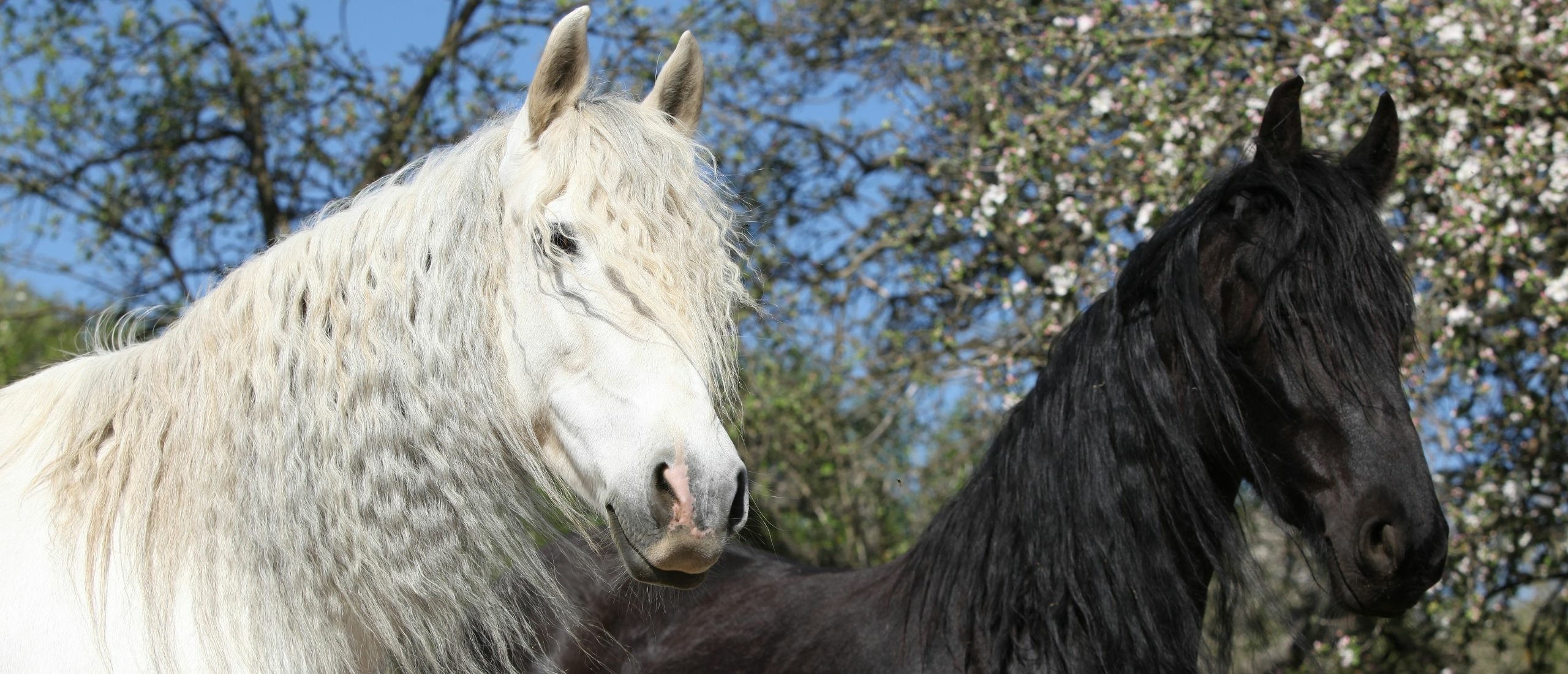
Are you a Matcher or a Mismatcher?
What do you see when you look at these orange figures?
How do the three figures relate to each other?

There are many answers possible!
And your answer depends on if you are a matcher or a mismatcher.
So let’s have a look at characteristics of matchers and mismatchers:
Matchers

When ‘matchers’ look at the three orange figures, they look for ‘sameness’ and ‘similarities’.
So a matcher we could say:
- They are all orange
- They are all rectangles
- They all have four sides
So matchers look at what the figures have in common.
Another type of matcher finds ‘sameness with exceptions’:
They see the ‘match’ first, and then the things that are different, so they could say:
They’re all rectangles, but two are laying down and one is standing up. Or two are big, and one is a bit smaller.
Mismatchers

When ‘mismatchers’ look at the three orange figures, they look for ‘differences’ and ‘what doesn’t fit’.
So a mismatcher could say:
- They’re all in a different position
- There’s a difference in standing up or lying down
- They are not alike when it comes to horizontal-vertical
Another type of mismatcher finds ‘differences with exceptions’:
They see the ‘mismatch’ first, and then the things that are the same, so they could say:
One figure is different and the other two are alike.
Qualities
When it comes to qualities of matching and mismatching, they are like this:
- Go along to get along.
- Give an exception to the rule.
MATCHING: | MISMATCHING: |
|
|
|
|
|
|
|
|
|
|
|
|
|
|
|
|
As human beings, we tend to be creatures of habit.
This doesn’t just apply to our behaviors, it also applies to our thoughts, feelings, beliefs, and attitude.
So we can have a ‘default’ matching or mismatching mindset.
Now both mindsets have benefits and drawbacks:
Benefits & Drawbacks of Mismatching
When it comes to a mismatching here are some advantages and disadvantages:
Benefits:
- A benefit of mismatching is that you question things, so you get into a figuring out state, which drives change and growth.
- Mismatching is also beneficial in times of reflection where you need to compare your work to a standard or a previous session.
- Mismatchers are the ‘devil’s advocate‘ which can be helpful to determine the validity of a concept or to examine it in more detail.
- Mismatchers seem to want accuracy, so they will show you the slight uncertainty in the definition you are using, or the potentially false assumption you are basing your point upon, so they can help you tweak and refine your ideas.
- They are perfect fault-finders, so leave them out of brainstorming sessions, but bring them in once the concept has been formed and ask them to seek out areas of improvement and to optimize quality. Don’t confuse their arguing nature with resistance, listen appreciatively to their speculation.

Drawbacks:
- Default mismatchers can be very pessimistic and disapproving.
- Extreme mismatchers just won’t agree, no matter how sound your argument. They may say “Well, actually…” quite a bit.
- Extreme mismatchers might see their response as an opportunity to show how smart they are.
- When dealing with a true mismatcher, you may find discussions are bogged down in details more than necessary.
- Default mismatchers look for ways in which what you’ve presented is flawed and present counter-examples.
- Constant mismatching can lead to conflict, and it can damage the relationship.
- Mismatchers may vary from being interesting, to being annoying, to driving you nuts. For example, if you say it’s a beautiful day, they go, “Yeah, but the temperature is a bit…” .
- After a lesson or clinic, when you hear a mismatcher tell somebody about it, they talk about everything that WASN’T discussed, which is not the brightest thing you can do in the learning process: to notice everything that’s NOT been talked about.

On social media they will share their unsolicited opinion about your picture or video:
- Your video is too short or too long.
- The music is too loud or not their taste.
- Why don’t you show a picture of XYZ?
- Can’t you write something about ABC instead?
It’s like giving them a bar of gold for free, but they ask: can’t you give it to me in golden coins?
Benefits & Drawbacks of Matching
When it comes to matching here are some blessings and handicaps of having this mindset:
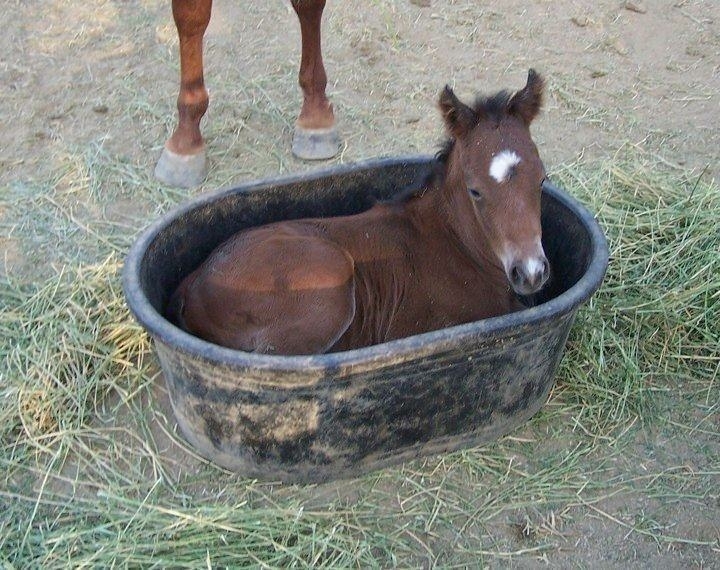
Benefits:
- Default matchers are often optimistic and approving.
- They learn with interest, not with opinion.
- They learnand grow real quick because they agree with what they are learning and don’t waste time on looking for what doesn’t fit in or what’s missing.
- Matchers act quickly because they always see opportunities to get the job done.
- They will find similarities in their situation, experiences, and imagination, so their ‘territory’ will quickly fit the ‘map’.
Drawbacks:
- Default matchers have the tendency to generalize.
- Without seeing the differences between this week and last week’s performance, it’s difficult to improve.
- They may follow ‘the rules’ blindly, not thinking for themselves.
- When extreme matchers say “yes” this may have to do with their desire to be liked by you or by their own horse.
- When matchers always like and agree with what their horse does and don’t set boundaries, this can lead to an imbalance in the horse and in the relationship.
Now when it comes to learning something new, matchers learn slightly different as mismatchers:
Matchers & Learning With Interest

Have you ever found a time and place where you were absolutely fascinated?
Where your attention was totally glued?
Where you were learning something, and you knew you were learning it, and really getting it?
And your focus was just completely locked on?
Where you were so captivated and intrigued by something that you didn’t want to miss even the smallest amount of it?
That’s because you were learning as a matcher:
You were learning with interest.
As a result, matchers learn and grow real quick!
With mismatchers it’s different STory, because they learn with opinion:
Mismatchers & Learning With Opinion

Too many mismatchers I know, when they’re learning, they’re thinking.
And those do not go hand in hand, because this is how it goes:
When mismatchers are about to learn something new, they run through and try to find something that won’t fit into the pattern.
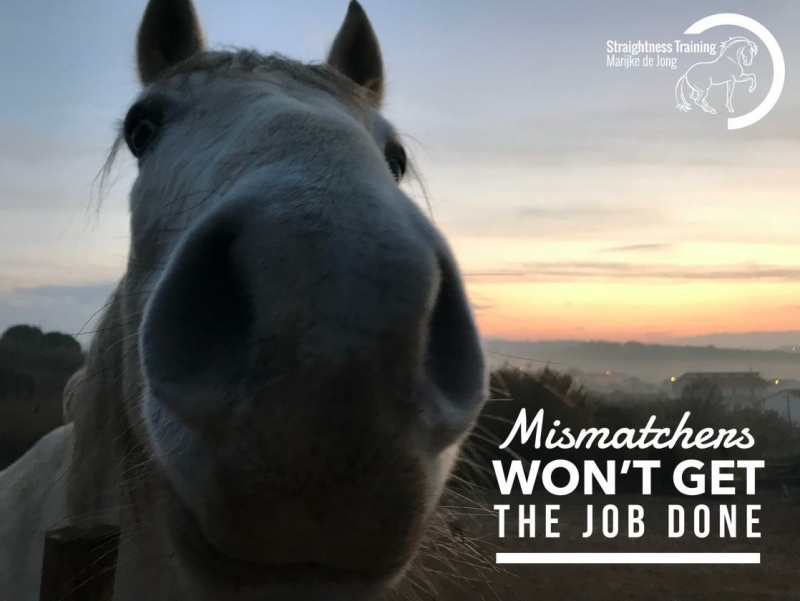
And people who are looking for how things don’t fit, are going to have a lot of trouble getting to the end.
Ever.
Because they’re wasting a lot of time with comparing their old way of training with the new ‘ST’ way.
So when people are coming from other equestrian disciplines, they use to ask me:
- “How does this fit with…”.
They are always trying to figure out the differences and how those two approaches fit and don’t fit together.
It’s like learning Portuguese, and every word is compared to what it is in Spanish.
So when people try to learn something new by figuring out “If it’s like something else…” well that won’t work in ST.
They want to translate this to that.
But my answer is: it doesn’t translate without losing a lot.
Just the same as when you translate any language to another language:
All you do is losing things in the process.
Besides comparing, they’re also looking for counter-examples:
Mismatchers on the Hunt for Counter-examples
When mismatchers try to understand things, they are often searching for a counter-example.
And they’re often not just finding one counter-example, they’re finding EVERYTHING that doesn’t fit in.
Especially when you present to them a generalization about something.
Now generalizations are meant as a ‘map’ of your own ‘territory’, they are guides to your behavior, they are not truths.
Because every generalization will collapse on itself at some point in time (even this generalization ).
But often mismatchers start sharing their counter–examples with me:
- “There’s a contradiction between what I am being told and what I see when it comes to exercise …”.
- “There is a conflict between written guidance and the video evidence when it comes to the amount of …”.
- “The distance between the hand and the horse’s nose on the line differs when you compare video A to B, so this doesn’t fit”.
- “The distance between the rider and the horse is not according to the standard mentioned in manual XYZ.”
- “The size of the circles doesn’t match the exact x meters in every moment in video ABC.”
Then they let me know that they feel uncomfortable with it.
And part of their learning strategy is, telling exactly what mismatches, and that I’m supposed to adjust the program so that it fits in…
… because only when it fits, they can get to the point where they get a clear picture and can truly understand it.
But
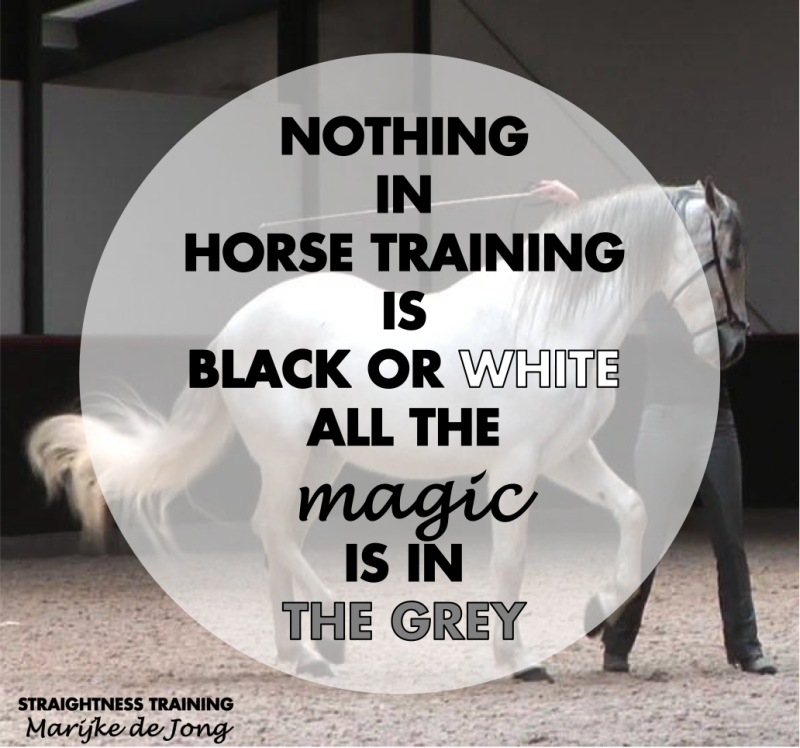
I could have told them out at the gate of our ST Academy:
There are a million things that don’t fit in!
In ST, nothing is black or white, ST is full of paradox – as is life – all the magic is in the grey.
Because here’s the secret:
- You cannot make any universal statement where there aren’t counter-examples!
Life is full of contradictions!
So to grasp the Straightness Training Universe:
- We need intelligence which is able to take this and that together at the same time;
- Knowing that it’s the balance of the oppositethings that makes the winners win;
- That it’s the contradictions were all the supernatural power lives!
So what to do if you’re a default mismatcher?
In other words:
How to Set Yourself Up For Success in ST?
These three tips will get default mismatchers up and running:
Tip #1: Mismatch That You’re A Mismatcher

The first thing every future STudent should discover is, that if you are a mismatcher, then one of the things you are going to have to do is to learn to mismatch that!
Because as a mismatcher you will be unable to use most of the ST materials, since the techniques, strategies, frameworks, and concepts were all designed by a matcher – me!
I’m looking FOR patterns, not for what’s not in them.
And those patterns are meant as signposts and guides, so you are able to DO something in your own territory and can make your own piece of art.
So if you cannot mismatch that you’re a mismatcher – and become a matcher – then don’t even start doing ST!
However, if you’re a matcher, ST is the perfect match!
Then onward to tip #2:
Tip #2: It’s Not Necessary To Understand Everything To Be Able To Use Everything
You don’t have to know everything about ST in order to use it.
It’s like flicking the switch and turn on the lights without knowing how electricity works.
There’s not some ‘rule’ that you are only allowed to use light bulbs if you know how the mechanism works in every detail (many of us would still be using candlelight right now!).
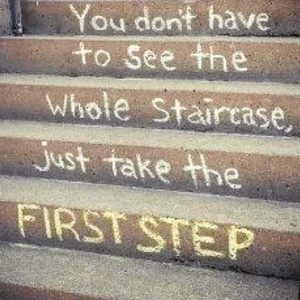
So successful STudents are especially good at making a distinction and finding the balance between knowledge and use.
They don’t spend all their time studying the details in the roots; instead, they learn to pick the fruit.
It means: the most successful STudents aren’t necessarily the ones with the most information and the most knowledge.
It’s the same in every other kind of arts and professions:
- There were probably plenty of scientists and engineers who knew more about computers than Steve Jobs, but he was extremely effective in using what he had, putting it to work, and sharing the excellent results with customers.
- And there are probably plenty of veterinarians and scientists who know a lot more about biology and biomechanics than you, me, and a lot of trainers combined. But only practical horse trainers, who have experience in doing, and are also receptive to the things that we’re aware of unconsciously, are the ones who usually get the best results when it comes to horse training.
So you don’t have to know everything about ST in order to use it!
Therefore, let’s continue with tip #3:
Tip #3: Just Do It
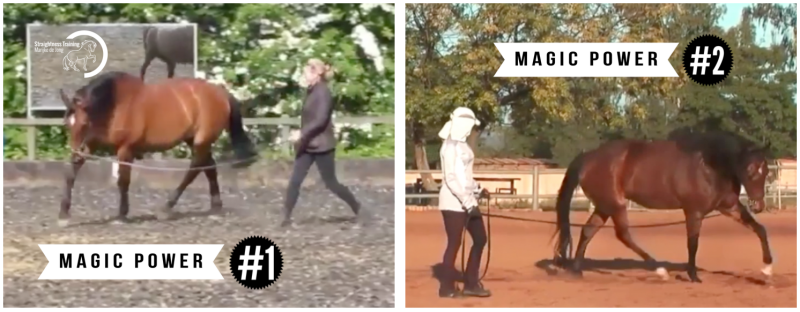
Get into a state of highly positive fixed attention, and just do as I say.
This is one of the two Magic Powers, because:
The one thing that all of my most successful STudents have in common…
And all the successful people I have ever worked with have the ability to do this one thing…
Well… that one thing is this:
When they hear a piece of advice, from someone that they have chosen to learn from, they say the following when given the advice:
“Okay”.
And then they go, and they do it.
The end.
And then they just do it without trying to mismatch with:
- Yeah but, what about this?
- Yeah but, what about that?
- What do I do with XYZ?
- Well actually, I’d rather do…
- Making up a story why that doesn’t work for their horse.
- Finding an excuse why it won’t work in their particular situation.
Instead, they’re like:
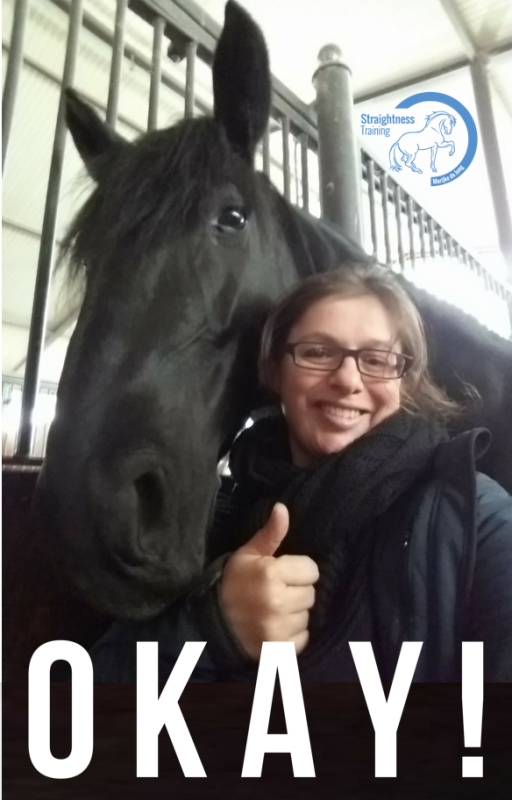
“Okay”
They think:
“You have, what I wanna have…
The STuff you’re doing, is probably going to work pretty well…
I’m not on a level to discuss things with you.
So I’m just going to do it!
And then if it doesn’t go as planned, I’ll ask a million questions on how to fix it.”
Because a lot of times things don’t go as planned, and that’s perfectly normal!
So I’m not saying:
“Hey, do everything I that I tell you to do personally, and you’re going in a straight line to perfection.”
Instead, it’s a cyclical process, and for sure you need some reflection on your work to get better and to improve.
But successful STudents are like:
- Just do it, and then tweak it after with 2mm at a time.
So tip #3 is about the magic ability to do the unthinkable which is:
Saying “Okay” and actually DOING the recommended STuff.

